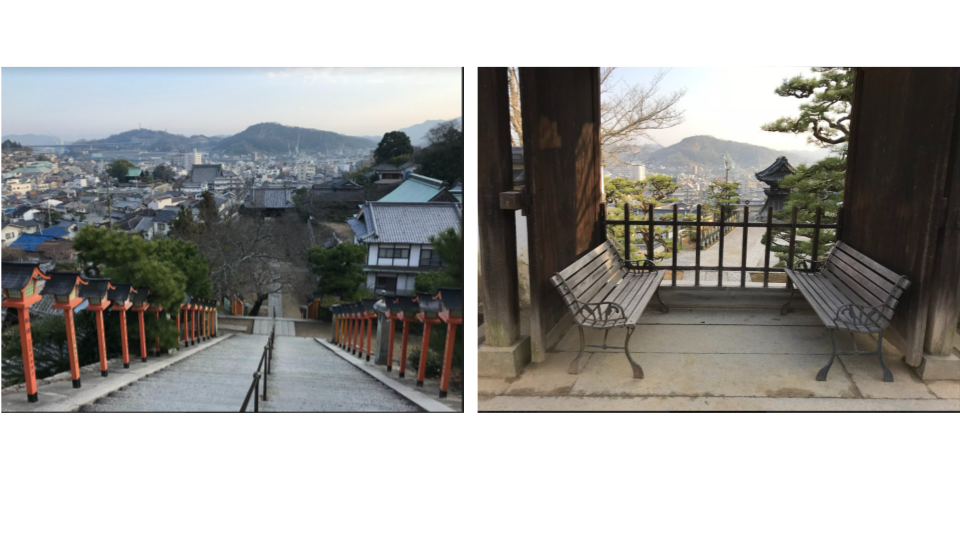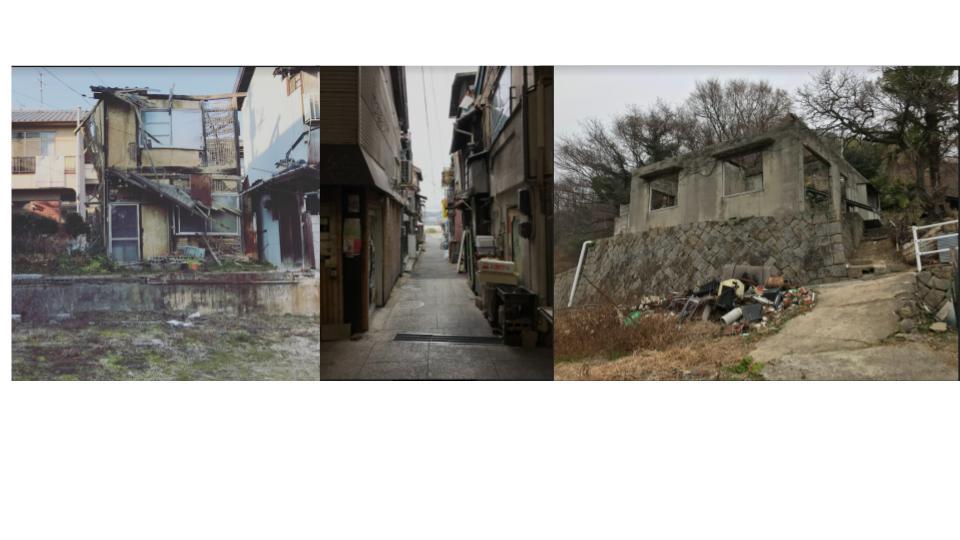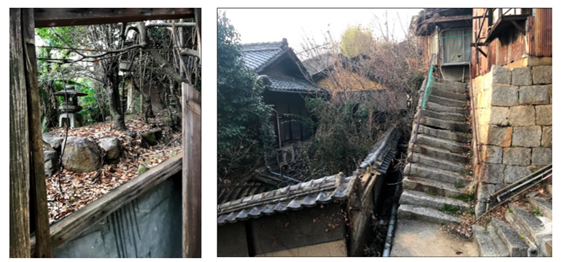by Wendy Wuyts
My Japanese and Belgian friend Miwako came to visit me in Nagoya in January 2018. She lived mostly in Belgium, but she was visiting family and friends in Tokyo and decided to visit me on her way to Onomichi, a place that I had not heard of before. Miwako is a filmmaker, whose short movies are about identity, home and family. Her personal documentary project was about the history of an empty family house in Onomichi. She showed me photographs of this beautiful traditional house and mentioned that it was used for commercials (as Onomichi is apparently a town with artists and filmmakers). She also told me about the town. Onomichi is a rural town characterized by industry and art.

Copyright Wendy Wuyts 2018
Ten days later, my friend greeted me in the train station of Onomichi. We walked in different alleys, some of which she did not know yet, and we peeked inside long abandoned houses. It was strange to walk in these wastescapes. It almost felt apocalyptic. By walking there, I could understand why people would not remove these empty constructions, because some houses were not accessible via roads suitable for motorized vehicles. The paths were narrow, steep and partly stairs.
We had lunch in a renovated house which was abandoned before. I heard about an NPO and activist movement that reclaims abandoned houses, the cultural heritage and identity of this place. I contacted them; but they had no time and asked me to come back later. That would be the start of getting to know this place and its lived experiences of the circularity potential of wastescapes for the next 1,5 years.

Copyright Wendy Wuyts 2018
When I first visited Onomichi, I had already lived in Japan for almost four months, more specifically in Nagoya, one of the largest, more conservative cities in Japan. To most people outside of Japan, Nagoya means nothing, so I usually introduce it as the city of Toyota. I spent three years in Nagoya working on my PhD in sustainability. Due to my encounter with Onomichi, the wasted potential of short-lived and vacant houses became the focus of my project which I approached through the concept of circular economy. Circular economy is an umbrella term for practices, principles, and ideas that ensure that we keep materials in society for as long as possible and that the value or functionality is preserved for as long as possible [1].
In Nagoya, my professor was researching empty houses as well, but his focus was rather on the reuse of abandoned houses’ materials, also called urban mining [3]. However, what I came to realize was that urban mining would not be the most desirable strategy: repurposing the houses, preferably for the intent they are made for, would be more circular, and would also be better in terms of identity, belonging and other social impacts. When my friend Miwako introduced me to Onomichi, which seemed to be an appealing place for her as an artist to learn more about identity, I was intrigued. The geographer in me was interested in the context of Japan and what circularity could mean in reality and which social impacts, for example on identity, it can have. Often, we talk about circularity as an abstract concept, but what exactly are the lived experiences of circularity [4]? What does it mean for people who really reclaim empty houses? What are the barriers and challenges in Japan?

Copyright Wendy Wuyts 2018
Later, during a revision of my PhD thesis, one of my supervisors asked me about the motivation of selecting Onomichi as a casestudy. “I did not choose it, it just came to visit me”, I wanted to say. The same is true for another study in Gifu that I will introduce in my next post. As a researcher, we have our networks and other resources, and this influences our knowledge production (and biases) a big deal, while allowing to illustrate the plurality of Japan in research.
References:
[1]
Kirchherr, J., Reike, D. and Hekkert, M., 2017. Conceptualizing the circular economy: An analysis of 114 definitions. Resources, conservation and recycling, 127, pp.221-232.
[2]
Tanikawa, H. and Hashimoto, S., 2009. Urban stock over time: spatial material stock analysis using 4d-GIS. Building research & information, 37(5-6), pp.483-502.
[3]
Wuyts, W., Sedlitzky, R., Morita, M. and Tanikawa, H., 2020. Understanding and Managing Vacant Houses in Support of a Material Stock-Type Society—The Case of Kitakyushu, Japan. Sustainability, 12(13), p.5363.
[4]
Wuyts, W., Marjanović, M. The Development of Spatial Circularity Discourse in Japan: Ecomodernist, Territorialised, or Both? The Story of Onomichi’s Wastescapes. Circ.Econ.Sust. (2022). https://doi.org/10.1007/s43615-021-00146-6
Wendy Wuyts, originally from Belgium, received her PhD in environmental science from the Graduate School of Environmental Studies, Nagoya University. She currently works as researcher in the Norwegian University of Science and Technology. Her research interests include (social impacts of) circularity, sustainable transitions and territorial ecology.
